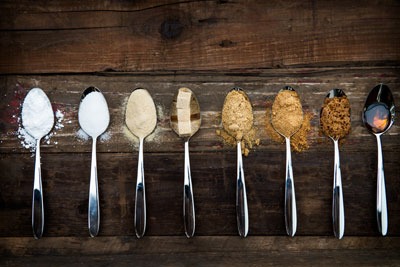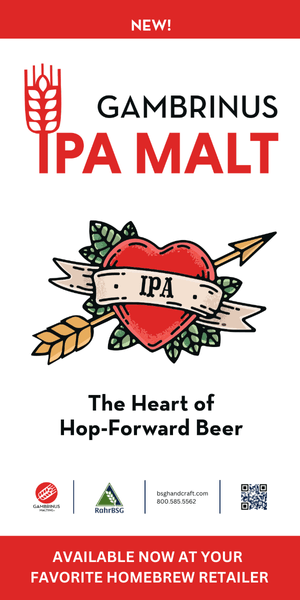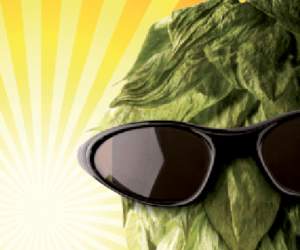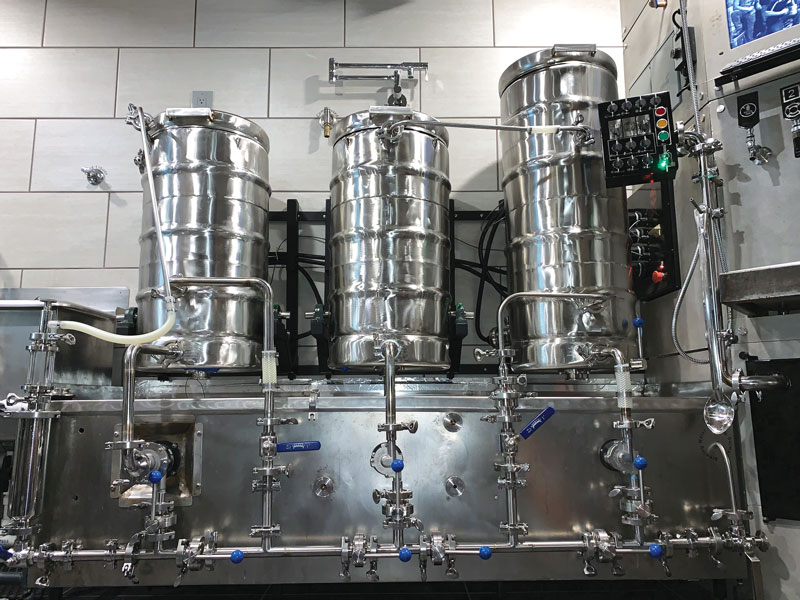Backsweetening

The what of this process is simple . . . add sugar to sweeten up your alcoholic beverage. It can be any type: Beer, cider, mead, or even wine. We have a plethora of sugars to choose from — table sugar, honey, raw cane sugar, maple syrup, agave, apple juice concentrate (for cider), etc. Seems simple, right? But the process is very limiting because yeast, once arrested, can no longer carbonate the beverage. Ergo backsweetening is more common in the still (uncarbonated) cider, mead, and wine world. But if you keg your beer, well then you can easily do it as well.
WHY BACKSWEETEN?
Backsweetening is an optional task that can easily ruin your efforts if not handled properly. Bottle bombs and over-sweetening are two of the most common problems associated with backsweetening-gone-wrong efforts. So why go through the effort when there are other options to sweeten a beer with an unfermentable sugar? First is the ability to fine-tune every batch. Second is that the flavors found in fermentables like maple syrup and honey just can’t be matched with unfermentables like Stevia, maltodextrin, or lactose.
When it comes to hard cider, acidity is one of the other key components to the flavor profile. A dry cider will be skewed heavily towards the acidity. Cidermakers may consider backsweetening a little to balance this out as sugar will reduce the perception of acidity. Another reason could be you’re making this batch for someone with a sweet tooth. Backsweetening a beer like an imperial stout with something such as agave, maple syrup, or a raw sugar (like demerera or turbinado) can add flavors such as vanilla-almond, or earthy-woody, and even caramelly flavors depending on the grades and sugars of choice. Finally, backsweetening can enhance “fruitiness” character, especially in fruited cider, fruit beer, or melomels. Adding a fruit concentrate can really help build this characteristic.
WHEN TO BACKSWEETEN
This process needs to occur prior to bottling for still beverages (still cider or mead), but can happen just about anytime post fermentation if you plan to keg. If you plan to bottle, a bit of time of bulk aging and retesting prior to bottling is a good thing. Also, it takes a little time for the proper yeast arresting chemicals (sorbate and metabisulfite) to fully affect the yeast. One of the biggest concerns is refermentation in the bottle and a little time to make sure the beverage remains stable at room (or cellar) temperature can be reassuring.
HOW TO BACKSWEETEN
Add sorbate at the rate of a ½ tsp. per gallon (3.8 L) along with potassium metabisulfite sulfite at a rate of about ¼ tsp. per 5 gallons (19 L). For a more precise metabisulfite calculator, you can find one on our sister publication’s website at: https://winemakermag.com/sulfitecalculator. Generally it’s good practice to add the sulfite, wait 12 hours, then add the sorbate. Wait another 48 hours and then add the sugar.
There are two ways to approach backsweetening, the guesstimate approach and the precision approach. If you want to take the guesstimate approach to cider and meads, then you need to know some basic guidelines. A dry cider or mead means that fermentation has gone to completion and there is no fructose, sucrose, glucose, etc. left. The 2008 Beer Judge Certification Program (BJCP) Style Guidelines for ciders stated that less than 0.9% residual sugar (9 g/L) is dry. Medium (or semi-sweet) cider runs 0.9–4% sugar (9–40 g/L) range. This is actually where many commercially available ciders labeled “dry” such as Angry Orchard Stone Dry and Strongbow Original Dry are found. Above 4% (40 g/L) and you are entering the sweet range, such as Woodchuck Amber or Stella Artois Cidre. Clinitest® is a quick and easy way to go about measuring the residual sugar in your beverage but hydrometers can work as well. Just remember that truly dry alcoholic beverages will be less than 1.000 SG. For each 1% sugar increase, the hydrometer reading will rise about 0.004. To backsweeten from 2 g/L to 5 g/L (0.2% to 0.5%), simply add 3 g of sugar for every liter in your fermenter. This will allow you to guesstimate the correct level of sweetness, but beware, oversweetening happens quickly.
The precision approach means bench trials. NOTE: These numbers need to be adjusted based on % sugar in whatever sugar solution you plan to use (e.g. maple syrup is often 66% sugar). To perform bench trials you’ll need a few tools: A good scale, a 1-mL graduated pipette, a 50-mL graduated cylinder, and a thief. Pull a sample out of the fermenter in the thief and measure three 50 mL aliquots. Make a sugar solution by mixing 25 g of sugar into 25 mL of water, then top up with water to 50 mL of sugar solution. You will need to heat this up to get it to dissolve. This is now a 0.5 g/mL (500 g/L) sugar solution. So each mL you add will add 1% sugar (10 g/L) to your 50-mL samples. You can start with some extremes or you can dial it in a smaller range if you’re trying to hone-in on specifics. But be sure to pour a separate control sample as well to test against the dry version. But even after identifying the “best” amount from trials, add in increments and taste as you go along. If you’re having trouble deciding . . . crowd-source! Get some friends over and see what they think.



